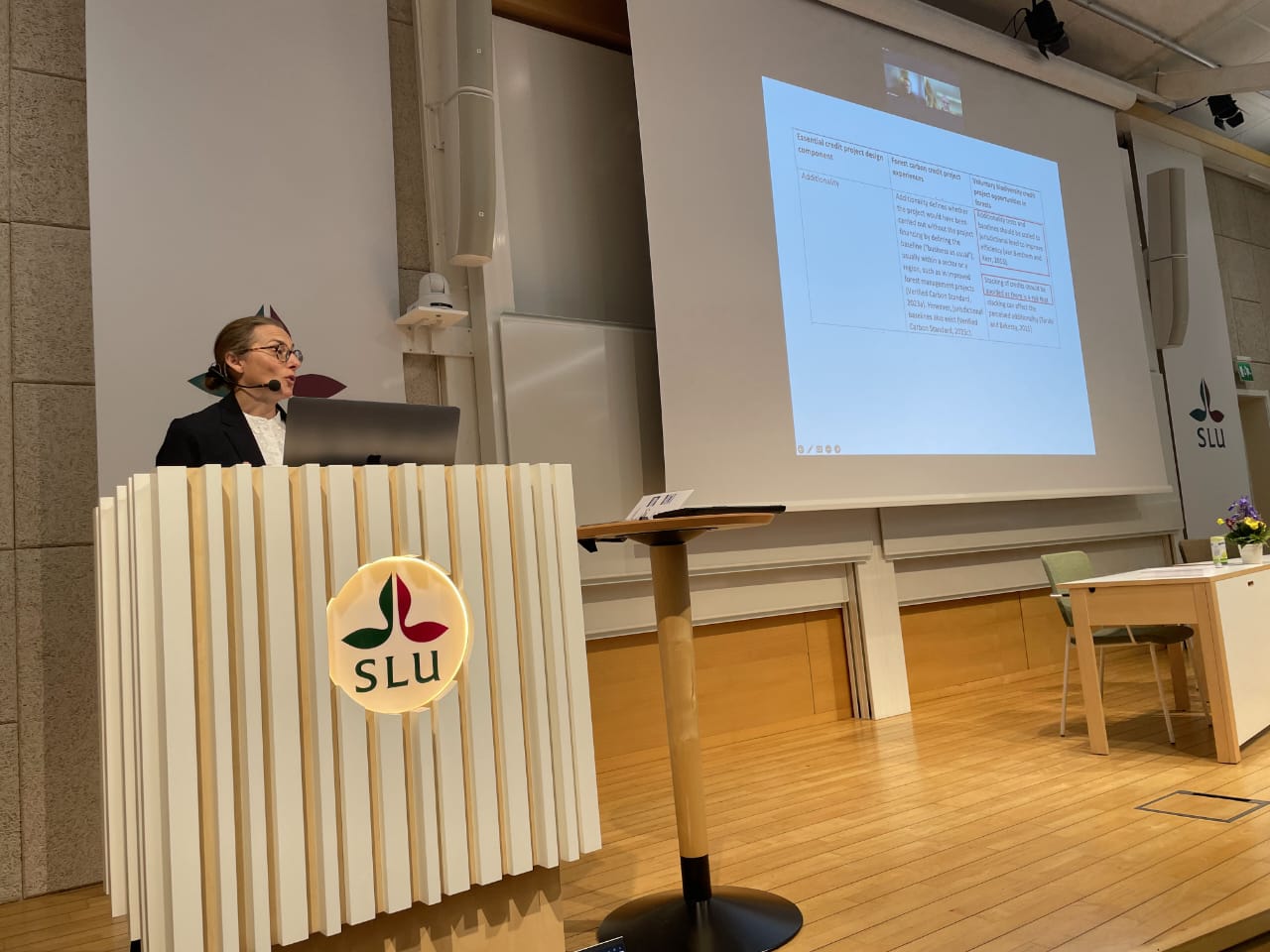After nearly three years of research, writing, fieldwork, and collaboration, I’ve completed my licentiate thesis: “Voluntary Biodiversity Credits: Emerging Concepts in Managed Forests.” It’s been an intense and eye-opening journey that has deepened my understanding of both the promise and the complexity of aligning biodiversity outcomes with economic systems — particularly in the context of production forestry.
My research focused on one core question: Can voluntary biodiversity credits create meaningful, measurable conservation outcomes within working forests — and under what conditions? This question required venturing into often uncharted territory, where forest management, biodiversity policy, financial incentives, and market design intersect.
Voluntary biodiversity credits are a relatively new and evolving instrument. Unlike traditional biodiversity offsets, which are often tied to regulatory requirements and compensatory logic, voluntary credits aim to reward additional, measurable biodiversity gains — regardless of whether a corresponding loss exists elsewhere. The ambition is to go beyond “no net loss” and toward net-positive outcomes for ecosystems.
However, this ambition is not without friction. During the course of my work, I encountered both conceptual and practical challenges:
- There is a lack of standardization in how credits are defined, measured, and verified.
- Ecological integrity must be balanced with the realities of timber production, especially in monoculture or intensively managed systems.
- Voluntary markets operate without regulatory compulsion, which makes questions of additionality, permanence, and leakage even more critical — and more difficult to prove.
- Most existing schemes overlook production forests entirely, despite growing evidencethat they can play an important role in biodiversity restoration when managed with care.
At the same time, I found real opportunities. Production forests cover nearly 30% of the world’s land area and are already managed within frameworks that could be adapted to accommodate biodiversity enhancement. Many forest owners are open to doing more — if there are viable economic incentives in place. Biodiversity credits could provide those incentives, and even unlock new forms of financing for conservation in landscapes that have traditionally been valued only for their timber.
My thesis explores how this could be made possible. It draws from existing literature, emerging policy frameworks, and early-stage market initiatives to outline what a high-integrity voluntary biodiversity credit system might look like in production forestry.
I’m grateful to my supervisors — Francisco Aguilar, Tomas Lundmark, and Anneli Ågren — for their guidance and for challenging me to think critically about both the science and the systemlevel implications of this work. I’m also thankful to everyone who has contributed their time, insights, or feedback throughout the process.
This work is just a small contribution to a much larger and rapidly evolving field. But I hope it offers some clarity — and perhaps even some inspiration — to those working to connect ecology and economy in more meaningful ways.
